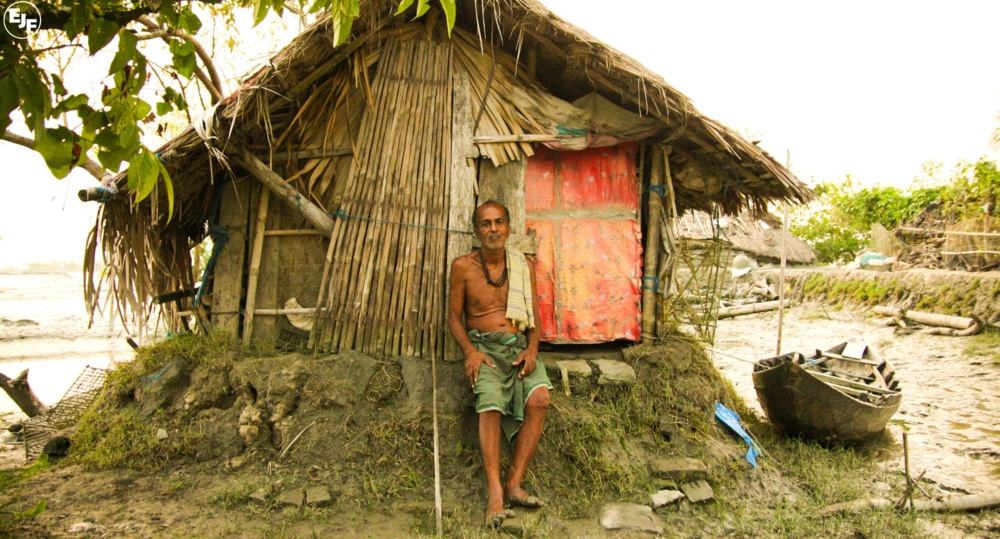
Climate Refugees need protection
Calculating how many people will be forced to move in response to climate change is next to impossible. But the fact that we cannot predict just how many will be forced from their homes does not mitigate the urgency of a crisis that is already with us. The international community must act to close existing protection gaps and develop a coherent response to the growing number of climate refugees.
Chris Bryant’s unfortunate reference to the figure of 200 million people forced to flee their homes as a result of climate change typifies the limited understanding that surrounds how climate change will impact upon human mobility. Similarly, Hannah Barnes’ recent coverage in the BBC Magazine gives the impression that climate change’s impact on migration patterns is relatively benign or insignificant. Both these representations are misleading. Whilst forecasts of how many, who, where and precisely why are hard, if not impossible, the fact remains that the environment has always affected patterns of human mobility – an observation that has long been made by those who study migration.
In 2012 alone, the Internal Displacement Monitoring Centre estimates that 31.7 million people – or one person every second – were forced from their homes by climate- and weather- related disasters. This is approximately three times the total number of people forced to move because of armed conflict. But as a 2011 UK Government Foresight report emphasises, the focus on whether climate change directly causes migration is misplaced. The more important question is how climate change impacts on existing drivers of migration.
If migration is a game and all the environmental (e.g. soil fertility), economic (e.g. assets), social (e.g. support networks), demographic (e.g. education) and political (e.g. migration policy) drivers of migration are the rules which affect how and when the players move; then climate change is the thing that reconfigures the variables to change how the whole game is played. In some cases, this may well lead to vulnerable people being ‘trapped’ without the resources to move. In others, it will lead to large internal displacements which pose serious operational challenges to under-resourced states. In a few cases - such as those of Small Island Developing States (SIDS) like the Maldives, Kiribati and Tuvalu – rising sea levels will eventually necessitate cross-border migration.
As recent research from the United Nations University Institute for Environment and Human Security (UNU-EHS) emphasises, it is essential to recognise that in every population affected by climate change there will be some households who have little choice but to adopt forms of mobility which actually erode their resilience and capacity to adapt to climate change in the long-term – even if these movements take the form of temporary migration over short-distances as UKCCMC’s Alex Randall points out. Decision-makers should ensure that policy interventions aim to support such people to move positively, safely and with dignity.
We should be careful not to understate that this is an issue of climate justice. As a 2013 World Bank report reiterates, it is the poorest and most climate sensitive countries that are affected first and worst by climate change. Yet, perversely, these are the countries who have benefited least from our carbon-intensive global economy: Kiribati has emitted the equivalent of a mere 0.0007% of the United States’ greenhouse gas emissions in the two decades 1990-2010 but the impacts of climate change pose a genuine existential threat to it as a state. In short, the world’s 50 least-developed countries together emit just 1% of total carbon emissions.
This is what makes it necessary to view climate change through a human rights lens as well as from an environmental perspective. A new United Nations mandate for a Special Rapporteur on Human Rights and Climate Change could further the protection of those forced to leave their homes as a result of climate-related disasters of decimated livelihoods, who currently face a major protection gap.
While it is next to impossible to reliably determine whether in any specific case climate change was the main cause that somebody moved, it is clear that the impacts will increasingly contribute to existing drivers of migration. Many who move will neither want, nor be forced, to cross a national border but nevertheless, climate change is forcing people to leave their homes, lands and livelihoods and it shouldn’t be necessary to prove one particular cause in order to justify protection.
It is those who are the most vulnerable who should matter in this debate. Which is why, ‘climate refugees’, ‘environmental migrants’ or whatever you want to call them, are in dire need of legal recognition and new protection instruments – regardless of their future numbers.
SIGN UP FOR OUR EMAILS AND STAY UP TO DATE WITH EJF